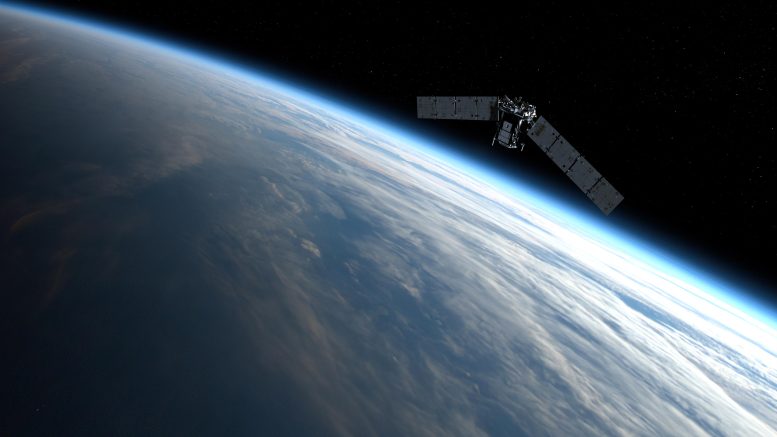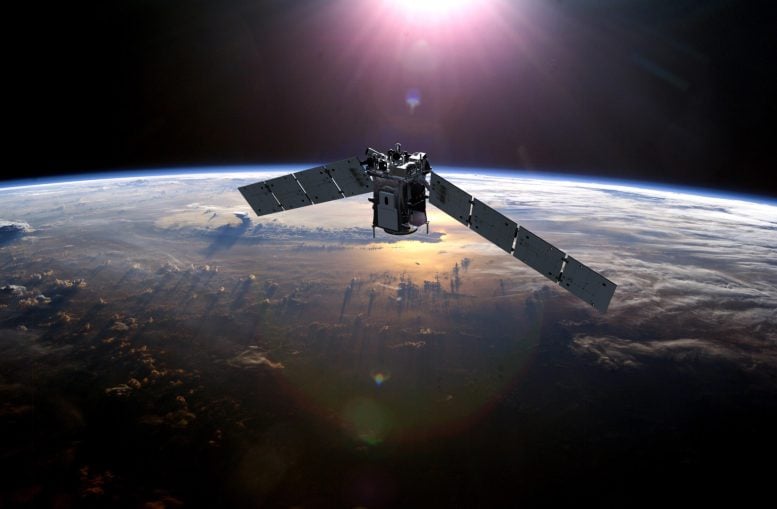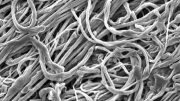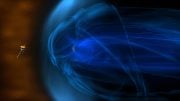
Artist’s impression of the TIMED spacecraft in orbit, scanning Earth. Credit: Johns Hopkins APL/Steve Gribben
Launched in 2001, NASA’s TIMED mission has now spent 20 years surveying the complicated dynamics of Earth’s upper atmosphere. Short for Thermosphere, Ionosphere, Mesosphere Energetics, and Dynamics, TIMED observes the chemistry and dynamics where Earth’s atmosphere meets space. On its 20th anniversary, the scientific community is reflecting on what they’ve learned from TIMED’s two decades of operations.
Influence Across the Fleet
TIMED’s contributions over the last 20 years have influenced missions across NASA, especially in the field of heliophysics, the science of the Sun-Earth system.
“TIMED plays an important role in our heliophysics fleet,” said Nicola Fox, director of the Heliophysics Division at NASA Headquarters in Washington. “The upper atmosphere is a critical part of our Sun-Earth system and TIMED’s long-term data set has been an important part of deepening our understanding of this dynamic. It has also paved the way for our newer missions studying this region.”
Heather Futrell, program executive of TIMED, also pointed out how TIMED’s contributions will affect NASA’s heliophysics missions for years to come. “As the sixth oldest NASA heliophysics mission, TIMED’s findings and performance over the past 20 years have helped shape our approach to missions that have launched since then and will launch in the coming years,” she said. “Existing missions, such as ICON and GOLD, and upcoming missions, such as AWE and GDC, build on the foundation of upper atmospheric science results that TIMED provided.”

Artist’s impression of the TIMED spacecraft in orbit above Earth. Credit: NASA/Johns Hopkins University Applied Physics Laboratory
Two Decades of Science
TIMED’s 20 years of data have given scientists an unprecedented perspective on changes in the upper atmosphere. TIMED studies the critical region that spans altitudes of about 40 to 110 miles (about 65 to 180 kilometers) above the Earth’s surface. The long lifespan of the mission has allowed scientists to track the upper atmosphere’s response to both quick-changing conditions – like individual solar storms – throughout the Sun’s 11-year activity cycle, as well as longer trends, like the cooling and contracting of the upper atmosphere due to climate change.
“TIMED is a testament to the type of work we do here at NASA,” said Peg Luce, deputy director of the Heliophysics Division at NASA Headquarters. “Twenty years is a long time and many of the people who have worked on this mission have moved on and some have retired. To all the folks who have worked on TIMED – in any capacity – thank you for your hard work and dedication. Your legacy includes an important mission that has deepened our understanding of the upper atmosphere-Sun-Earth interaction and helped shape the field of heliophysics.”
Samuel Yee, principal investigator for TIMED, also applauded the long-term impact this mission has had. “In 2011, 10 years after TIMED launched, I predicted that TIMED’s findings would provide insight for years to come,” said Yee, who is based at Johns Hopkins Applied Physics Laboratory in Laurel, Maryland. “Now, 20 years after launching, TIMED has changed our understanding of the upper atmosphere and how it responds to our Sun and conditions on Earth, influencing heliophysics and Earth science research forever.”
“There’s no doubt that TIMED observations have improved our understanding of many complex physical processes at work in Earth’s upper atmosphere,” said John McCormack, TIMED program scientist at NASA Headquarters. “TIMED continues to make important contributions to understanding how changes in the upper atmosphere – over time scales from days to decades – are connected to what’s happening in the lower atmosphere.”
Impact on Earth
TIMED has also played a role in many scientific careers, inspiring Ph.D. students who would go on to lead their own missions and instruments on upper atmospheric science.
“Looking back, working on TIMED was a magical time for me,” said Marty Mlynczak, principal investigator for TIMED’s Sounding of the Atmosphere using Broadband Emission Radiometry (SABER) instrument, built and operated at the Johns Hopkins Applied Physics Laboratory. “I was in a lead role on a NASA flight mission a few years after finishing my doctorate. My Ph.D. and post-graduate research were going into orbit! I was working with the eminent scientists in the field at the time. Everyone working on TIMED had one objective: success of the mission.”
“The launch of the TIMED satellite in 2001 with SABER onboard changed my scientific life and added a new science dimension that will never go away,” said James Russell III, SABER PI emeritus and endowed professor and co-director of the Center for Atmospheric Sciences at Hampton University in Virginia. “This ‘new world,’ literally on the edge of space, brought with it exciting opportunities for advancing atmospheric science. It has been exceptionally rewarding to work with the TIMED team to unfold some of the known mysteries of the mesosphere and lower thermosphere and uncover others that we did not know existed.”
NASA’s Goddard Space Flight Center manages the TIMED mission for the Heliophysics Division within the Science Mission Directorate at NASA Headquarters in Washington. The Johns Hopkins University Applied Physics Laboratory in Laurel, Maryland, built and operates the spacecraft for NASA.









Be the first to comment on "How TIMED Flies: NASA Upper Atmosphere Mission Celebrates 20th Anniversary"